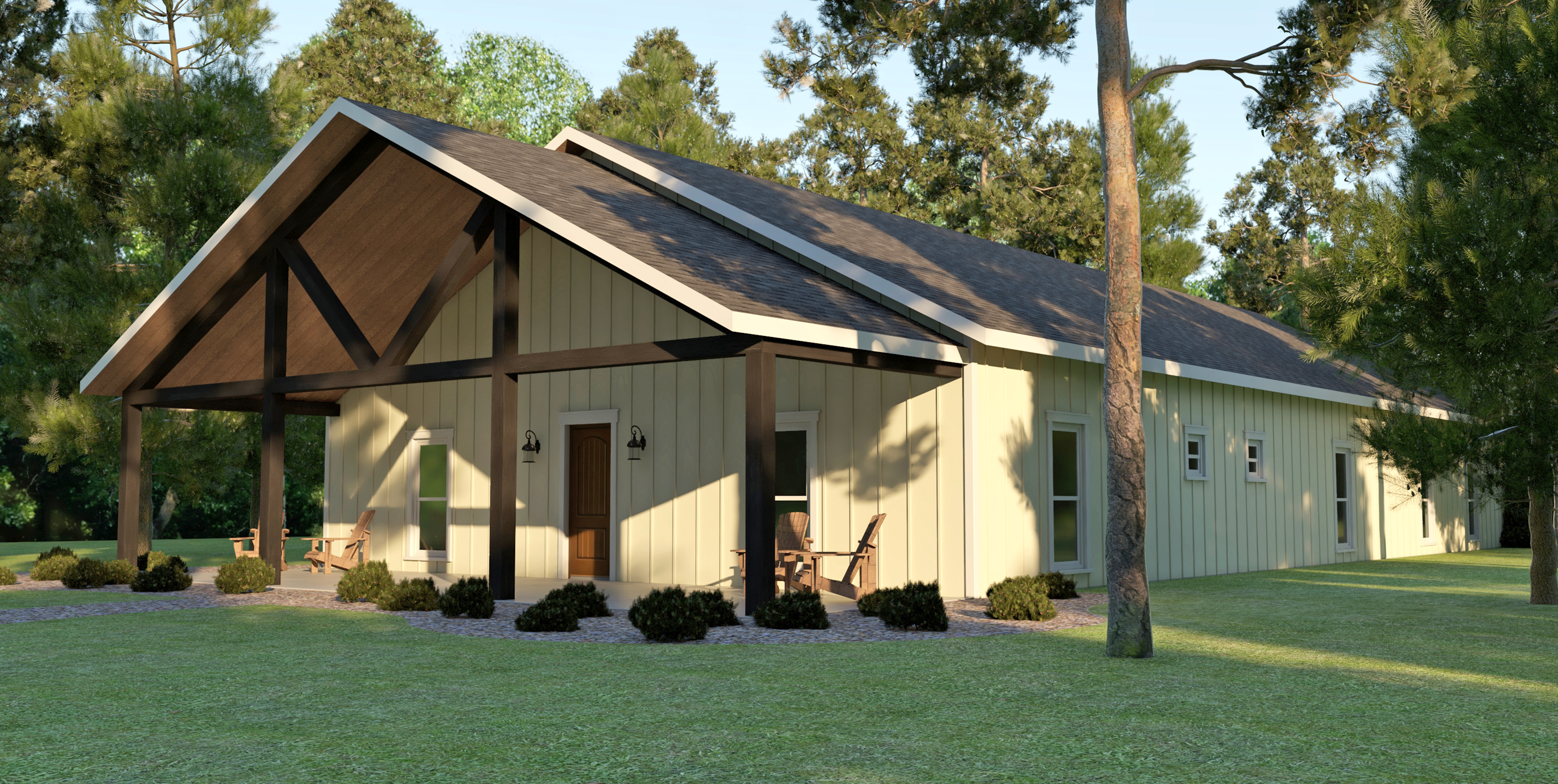 The construction industry uses some arcane terms. Here are a few to help with the communications…
The construction industry uses some arcane terms. Here are a few to help with the communications…
Building Design Terms
A
Acceptable Solution – A design solution deemed to comply with the Building Code that is pre-approved and therefore has fewer compliance costs associated.
Alteration – The rebuilding, re-erecting, repairing, enlarging and extending of a building.
Alternative solution – A design solution that differs totally or partially from Acceptable Solutions or Verification Methods in the Compliance Documents, yet complies with the performance requirements of the Building Code. These are ‘standalone’ solutions put forward and substantiated by the building consent applicant and considered and approved on their individual merits by a building consent authority.
Amendment – Changes to the plans and/or specifications on which the building consent was granted require an amendment to the original consent.
B
Beams – Load bearing cross members, usually timber or steel, that support the upper structure of a building – additional floors and/or roofs.
Building – Any temporary or permanent, movable or immovable structure including a structure intended for occupation by people, animals, machinery or chattels.
Building Code – The national, mandatory standards for building work. All building work in New Zealand must comply with the Building Code.
Building consent – Consent issued by a building consent authority for building work to begin in accordance with the approved plans and specifications. For information about when a building consent is required and how to apply, see Building consents and inspections process.
Building Consent Authority (BCA) – BCAs are Territorial Authorities, Regional Authorities or private body that has been registered by the Department of Building and Housing. BCAs issue building consents, undertake inspections during construction and issue code compliance certificates, notices to fix and compliance schedules.
Building envelope – The entire exterior surface of a building, including foundations, walls, doors, and windows that encloses or envelops the space within.
C
Cavity – The cavity space immediately behind a wall cladding that has vents at the base of the wall. Cavities allow for drainage, which is one the four principles in managing water in and around buildings.
Certificate of Acceptance – A certificate issued by a BCA to retrospectively approve unconsented work, or approve work where a BCA is unable or refuses to issue a code compliance certificate in respect of building work for which it granted a building consent. The certificate confirms that, to the extent an inspection was able to be carried out, the work complies with the Building Code.
Cladding – The exterior weather-resistant surface of a building.
Code Compliance Certificate (CCC) – A certificate issued by a BCA at the completion of building work, confirming that the building work complies with the building consent.
Compliance – Occurs when building performance, according to the standards in the Building Code, has been achieved.
D
Durability – ‘Durability’ is covered by Clause B2 of the Building Code.
E
E2 – ‘E2 External moisture’ is a clause within the Building Code requiring the prevention of water that could cause undue dampness and damage to building elements.
Eaves – The part of the roof that extends out over the walls.
Exempt building work – Building work not requiring building consent as defined in section 41 and Schedule 1 of the Building Act 2004. Exempt building work must still comply with the Building Code.
F
Fascia – any relatively broad, flat, horizontal surface, but usually referring to the edge of the roof line where the gutters attach.
Flashing – A building element used on a joint between two materials designed to catch and drain rainwater to prevent it penetrating the interior. Inadequate flashings have been linked to problems with Weathertightness.
Foundations – The substructure that supports a building, such as piles, piers or footings, with the purpose of transmitting structural loads from the building into the earth.
Frame/framing – The skeletal framework of a building to which roofs, floors, and cladding are attached. Usually constructed of wood or steel, the components of the frame include studs, beams, joists, and rafters.
G
Green building – The practice of increasing the efficiency with which buildings and their sites use and harvest energy, water, and materials, to reduce building impacts on human health and the environment. This includes aspects of siting, design, construction, operation, maintenance, and removal.
J
Joists – Parallel beams of timber, concrete or steel for supporting floors or ceilings, etc.
L
Licensing Building Practitioners (LBPs) – A licensing system for the building industry covering designers and trades. From March 2012 certain critical building work will need to be carried out or supervised by a licensed building practitioner.
M
Monolithic cladding – A cladding of sheet material forming a continuous mass, with an applied coating to give the appearance of a seamless cladding. This type of cladding has sometimes been implicated in issues of weather tightness.
P
Parapets – A low protective wall at the edge of a balcony, roof, bridge, or the like
Producer statement – A statement expressing the author’s view that plans, specifications, or completed works comply with the technical requirements to satisfy some or all requirements of the Building Code – A producer statement will usually be issued by a recognized specialist, for example, an engineer, architect or competent contractor. It is up to the building consent authority (BCA) to decide whether to rely on such a statement. These documents have no specific status in law, but they can still be accepted and considered by a BCA as part of the plans and specifications.
Product certification – Certification by a product certification body that a specific building product, system or method meets nominated provisions of the Building Code, if used in accordance with conditions on the product certificate.
Purlins – longitudinal member in a roof frame, usually for supporting common rafters or the like, between the plate and the ridge
Q
Quantity Surveyor – A person trained in construction measurement and costs. They usually work closely with the architect/designer, engineer and builder to itemise the quantities of materials and labour needed to build a house or other building, using the design drawings, and to give an estimate of how much the project should cost.
R
Renovation – To restore to a previous or better condition.
Resource consent – A consent issued by a Territorial Authority to use the land in a way that is not a permitted activity under a council or district plan. Resource consent will be needed when a building project will contravene a permitted activity, for example, wishing to locate a building closer to the boundary than permitted on the District Plan.
Restricted building work – Building work that requires a building consent and relates to an element of a building that is critical to the integrity of the building and the health and safety of its occupants and includes, without limitation, work on the building envelope and the structural support of a building. Restricted building work must be carried out, or supervised by, a licensed building practitioner.
Risk matrix – A table in the Clause E2 Compliance Document (Acceptable Solution E2/AS1) that enables the calculation of a ‘risk score’ by the allocation and summing of scores for a range of design and location factors applying to a specific building design. Once this score is known, the range of allowable claddings can then be determined.
S
Soffits – the underside of an architectural feature, as a beam, arch, ceiling, vault, or cornice but usually referring to the underside of the eaves.
Specifications – Detailed written instructions containing details of work to be done and materials to be used in the construction of a building.
Subcontractor – A tradesperson hired to do specific work such as roofing, plumbing, wiring or painting. The subcontractor takes instructions from, is paid by, and is responsible to the main contractor.
T
Tradesperson – A skilled manual worker who has typically been formally trained through an apprenticeship programme, for example a carpenter, plumber, roofer, painter or plasterer.
V
Variation – A change to the approved plans and specifications for a building project, occurring during construction. A variation requires an amendment to the building consent and needs to be formally advised and justified to the building consent authority, and then checked, approved and recorded by the building consent authority.
W
Warranties – A promise, either written or implied, that the materials and workmanship of a building are without defect or will meet a specified level of performance over a specified period of time. The Building Act 2004 (sections 397–399) provides that building work on household units is automatically covered by warranties as to the manner in which the work is undertaken and the suitability of materials used. The warranties apply whether written into the contract or not.
Waterproof/waterproofing – The process of rendering a building element or building totally resistant to the ingress of any moisture.
Weather tightness – The resistance of a building to the weather. Weathertightness is not necessarily waterproofing (see above). A building is weathertight when water is prevented from entering and accumulating behind the cladding in amounts that can cause undue dampness or damage to the building elements, ie. moisture may occasionally enter a weathertight building but is able to harmlessly escape or evaporate.







